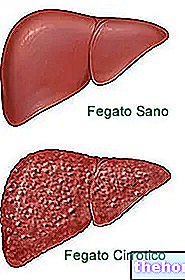Edited by Doctor Francesco Casillo
The improvement of cardiovascular risk parameters in the CR group (CR = Carbohydrate Restricted = dietary regime with few carbohydrates) is independent of caloric reduction, therefore of weight loss. Furthermore, the further improvement of the CR group in these parameters, reported after weight loss, is not significant but still higher than the LF group (LF = LOW FAT = low fat diet regime).
In the LF group, the improvement of cardiovascular parameters occurs only after weight loss obtained with caloric reduction, but the positive results on these markers reported in the last week remain lower than those reported by the CR group before losing weight and after the loss. On the other hand, the serum level of HDL is even worsening (and therefore decreasing) in the LF group before the caloric reduction, probably due to the negative effects on it exerted by the high carbohydrate intake with which the HDL level is inversely correlated .
Furthermore, it should be emphasized that the caloric reduction is also responsible for a decrease in the absolute carbohydrate quota (grams of carbohydrates), also in the LF group, a key factor in the improvement of risk markers as observed in the CR group. This leads us to speculate that the real improvement of risk markers in the LF group does not consist in the weight loss due to the caloric reduction, but in the inevitable reduction of the carbohydrate intake consequent to the caloric deficit.
Therefore, if the overall picture of the experimental context (composition of the diet, caloric reduction, weight loss and dynamics of their causal interactions) is not carefully evaluated, body weight acts as a misleading variable as the apparent cause of the improvement in arterogenic dyslipidemia, for its co-manifestation to itself, in relation to which, in reality, it is instead only co-effect and not direct causal effect.
This consideration arises from the observation of 2 key points:
the caloric cut determined, with reference to the risk parameters, greater relative variations in the LF group compared to the CR group, since in the latter the blood lipid values had already undergone a drastic improvement in response to the different composition quality of the diet. before the caloric reduction, whereas in the LF group the absolute carbohydrate reduction deriving from the caloric decrease is the new element.
If weight loss had been the cause of the improvement it would have resulted in equal consequences in both groups or in any case the CR group would not have found significant improvements in markers prior to caloric reduction and weight loss.
At the end of all the evaluations of the case, the blood lipid level appears to be a function of the manipulation of insulin levels rather than of the dietary lipid intake itself. And more precisely, the positive effects found by the CR group are in response to the consequent low insulin levels. low carbohydrate intake, which (insulin levels) would be responsible for the metabolic regulation of blood lipids.
The next time your doctor - or whoever he is - tries to divert your noble intentions in "adopting a high-protein diet by emphasizing its potential negative repercussions on the various aspects for which they enjoy" unfounded "criticism (given the very recent scientific evidence that instead debunks it), then resign yourself to the recommendations of the obsolete food pyramid, answer that the food priorities from this given in the first bracket are a reason for an increase in adiposity and worsening of cardio-vascular risk markers and in this sense more inclined to correlate it to Dante's "circle of gluttons" both for similar eating habits and for the "damned" consequences on the health of his habits and the narrowness of the apex - to which the protein and lipid sources belong (and not that relating to confectionery) - is representative of the low percentage number of long-lived people relative to industrial countries and the sacrificed percentage of success, reported by the goers of gyms or fitness centers, in achieving satisfactory physical-aesthetic results.
Other articles on "Low Fat Diet and Cardiovascular Risk"
- Atherosclerosis prevention: hypolipidic, hypocaloric hyperglucidic diet VS hyperlipidic, hypoglucidic, hypocaloric diet
- Fats, health and atherosclerosis
- Atherogenesis, the process of atherogenesis
- Effects of a hypoglucidic, hyperlipidic, low calorie diet on the prevention of CVD
- Fats, diet and prevention of atherosclerosis
- Fats and health: conclusions




























